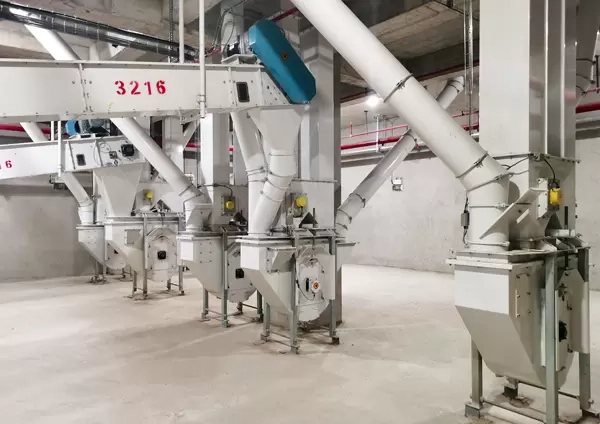The poultry feed production line is an indispensable and important equipment in the modern poultry breeding industry. Its normal operation is directly related to the quality and output of feed, and is crucial to the economic benefits and development of poultry farming enterprises. This article will delve into the maintenance strategies of poultry feed production lines to ensure efficient, stable and long-term operation of the production lines and help breeding companies improve production efficiency and reduce costs.
1. Regular cleaning and lubrication
After a long period of operation, the poultry feed production line will accumulate a large amount of dust, impurities and grease, which will affect the normal operation of the equipment. Therefore, regular cleaning and lubrication is one of the basic steps in maintaining a poultry feed production line. First, professional cleaning agents should be used to thoroughly clean the equipment, including cleaning conveyor belts, crushers, mixers, etc. Secondly, lubricate key parts of the equipment to reduce wear and friction and extend the service life of the equipment.
2. Check and replace wearing parts
Some parts in the poultry feed production line are prone to wear and tear, such as blades, screens, etc. The wear and tear of these wearing parts will lead to a decrease in the efficiency of the equipment and a decrease in feed quality. Therefore, regular inspection and replacement of wearing parts is an important part of maintaining the poultry feed production line. During the inspection process, attention should be paid to the degree of wear of wearing parts. Once serious wear is found, they should be replaced in time to ensure the normal operation of the equipment.

3. Adjustment and calibration of equipment
Some equipment in the poultry feed production line needs to be adjusted and calibrated regularly to ensure its working effect and feed quality. For example, the mixing speed and time of the mixer need to be adjusted according to different feed formulas to ensure the uniformity and stability of the feed. In addition, the electrical system of the equipment needs to be checked regularly to ensure the normal operation of the electrical components and to avoid equipment shutdown due to electrical faults.
4. Fault diagnosis and quick response
Once an abnormality in the production line is discovered, quickly and accurately diagnosing the problem and responding to it is the key to reducing losses. Operators should receive professional training, master basic fault diagnosis skills, and be able to determine the nature of the problem as soon as possible and take preliminary emergency measures. At the same time, close links with poultry feed production line suppliers ensure that professional support can be obtained quickly when necessary.
5. Spare parts management and replacement plan
Proper management of spare parts inventory is crucial for timely repair of faulty equipment. Companies should develop spare parts storage and replacement plans based on historical data on equipment wear and failure. At the same time, choose a reliable poultry feed production line supplier to ensure the quality of spare parts and the stability of supply.
6. Technology upgrade and performance optimization
As technology develops, new equipment and improvements continue to emerge. Companies should pay attention to technological trends within the feed equipment industry and evaluate and adopt new technologies that can improve production efficiency and equipment performance. The performance of poultry feed production lines can be continuously improved by regularly upgrading software systems, replacing old equipment, or introducing advanced monitoring and control technology.
7. Training and cultural construction
The effectiveness of maintenance work is highly dependent on the professional skills and responsibility of the operators. Therefore, companies should invest in employee training and development and establish a prevention-focused maintenance culture. Through continuous education and skills improvement, employees can better understand the working principles of equipment and detect and solve problems in a timely manner.
8. Environmental monitoring and improvement
Environmental factors such as temperature, humidity, dust, etc. may affect the normal operation and production efficiency of the equipment. Implementing an environmental monitoring system to monitor changes in the production environment in real time and taking corresponding measures to adjust will help maintain stable production conditions.
9. Cost control and benefit analysis
Maintenance work must not only consider maintaining stable operation of the production line, but also take into account cost-effectiveness. Regularly conduct cost-benefit analysis and compare the input-output ratio of different maintenance solutions to help formulate an economical and reasonable maintenance plan.
10. Safety standards and regulatory compliance
Safety production is an important aspect that enterprises cannot ignore. Complying with national standards and regulations on equipment safety and ensuring that the operation and maintenance of poultry feed production lines comply with relevant requirements are necessary measures to protect employee safety and avoid legal risks.
The maintenance of poultry feed production lines is a systematic work. Breeding enterprises should attach great importance to the maintenance of poultry feed production lines, formulate scientific and reasonable maintenance plans, and equip professional maintenance personnel to ensure the long-term stable operation of the equipment.
mia
fast@jsfast.cn

